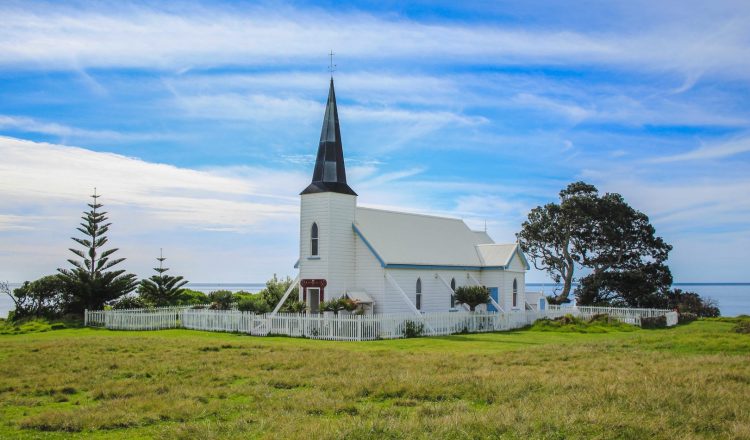人口
ベイ・オブ・プレンティを拠点とするオポティキ地区は、ニュージーランドの北部に存在する。6月の国勢調査によると、この地区の人口は9,720人、都市人口は4,530人であった。総人口のうち、51% が女性、49% が男性である。ここでは、Opotikiに住むさまざまな年齢層の人々の内訳を示します。
年齢グループ
| パーセンテージ | |
|---|---|
| 0-14 年 | 22.3% |
| 15-64歳 | 59.1% |
| 65歳以上 | 18.6% |
明らかなように、オポティキはバランスのとれた人口を持ち、そのほとんどは中年です。さらに、人口のかなりの部分が若年成人によって作られており、町は学生にとって素晴らしい住居になっています。
民族
町には主にマオリ族人口が住んでおり、町の住民の最大50%を占めている。共通の民族には以下のようなものがある。
• ヨーロッパ人 (50%)
• マオリー (63.7%)
• 太平洋民族 (3.5%)
• アジア人 (2.8%)
• その他 (1%)
全体として、町はさまざまな民族の人々が集まって調和のとれたコミュニティを形成しています。
• ヨーロッパ人 (50%)
• マオリー (63.7%)
• 太平洋民族 (3.5%)
• アジア人 (2.8%)
• その他 (1%)
全体として、町はさまざまな民族の人々が集まって調和のとれたコミュニティを形成しています。
宗教
全体として、オポティキはそれほど宗教的な町ではありませんが、かなりのキリスト教徒の人口を抱えています。全体的に、この町はほとんどの宗教の人々にとって包括的です。
| 宗教 | パーセンテージ |
|---|---|
| 聖公会 | 8% |
| カトリック | 3.9% |
| 長老派 | 9.3% |
| その他のクリスチャン | 15.1% |
| イスラム教徒 | 1.5% |
| 仏教徒 | 0.4% |
| その他の宗教 | 38.5% |
| 宗教なし | 23% |
| マオリの信念 | 0.3% |
収入
オポティキ地区の人々の大半は、手数料、賃金、給与、ボーナスを通じて生計を立てます。ここから、収入源のリストを、その有病率順に以下に挙げる。
• 退役軍人年金
• 自営業
• 利息、家賃、またはその他の投資
• 国内目的の特典
• 失業給付
• 政府の給付金または支払い
• 学生手当
• 保険会社からの支払い
就業率については、人口の 43.3% がフルタイムの仕事に就いているのに対し、14.5% はアルバイトをしています。人口の残りの7.3%は失業者です。
雇用者は主に以下の業界で働いている。
• 農林業
• 教育と訓練
• ヘルスケア
• 小売業
• サービスの管理
• 製造
• 建設
• 卸売業
• 宿泊とフードサービス
• 芸術とレクリエーション
• 鉱業(ごく少数の人々)
• 退役軍人年金
• 自営業
• 利息、家賃、またはその他の投資
• 国内目的の特典
• 失業給付
• 政府の給付金または支払い
• 学生手当
• 保険会社からの支払い
就業率については、人口の 43.3% がフルタイムの仕事に就いているのに対し、14.5% はアルバイトをしています。人口の残りの7.3%は失業者です。
雇用者は主に以下の業界で働いている。
• 農林業
• 教育と訓練
• ヘルスケア
• 小売業
• サービスの管理
• 製造
• 建設
• 卸売業
• 宿泊とフードサービス
• 芸術とレクリエーション
• 鉱業(ごく少数の人々)
天気
オポティキは南緯38度に位置し、温暖な気候です。夏には、気温は摂氏20代半ばに上がります。したがって、この地区には活況を呈するビーチカルチャーがあります。この地域は冬はほとんど曇りがないが、気温が氷点温度を下回ることはなく、快適な生活に適した気候となっている。
教育
教育のために、オポティキには3つの小学校があります。以下があります。
• アシュブルックスクール
• オポティキ学校
• ウッドランズ・スクール
すべての学校が男女共学である。
• アシュブルックスクール
• オポティキ学校
• ウッドランズ・スクール
すべての学校が男女共学である。

















































